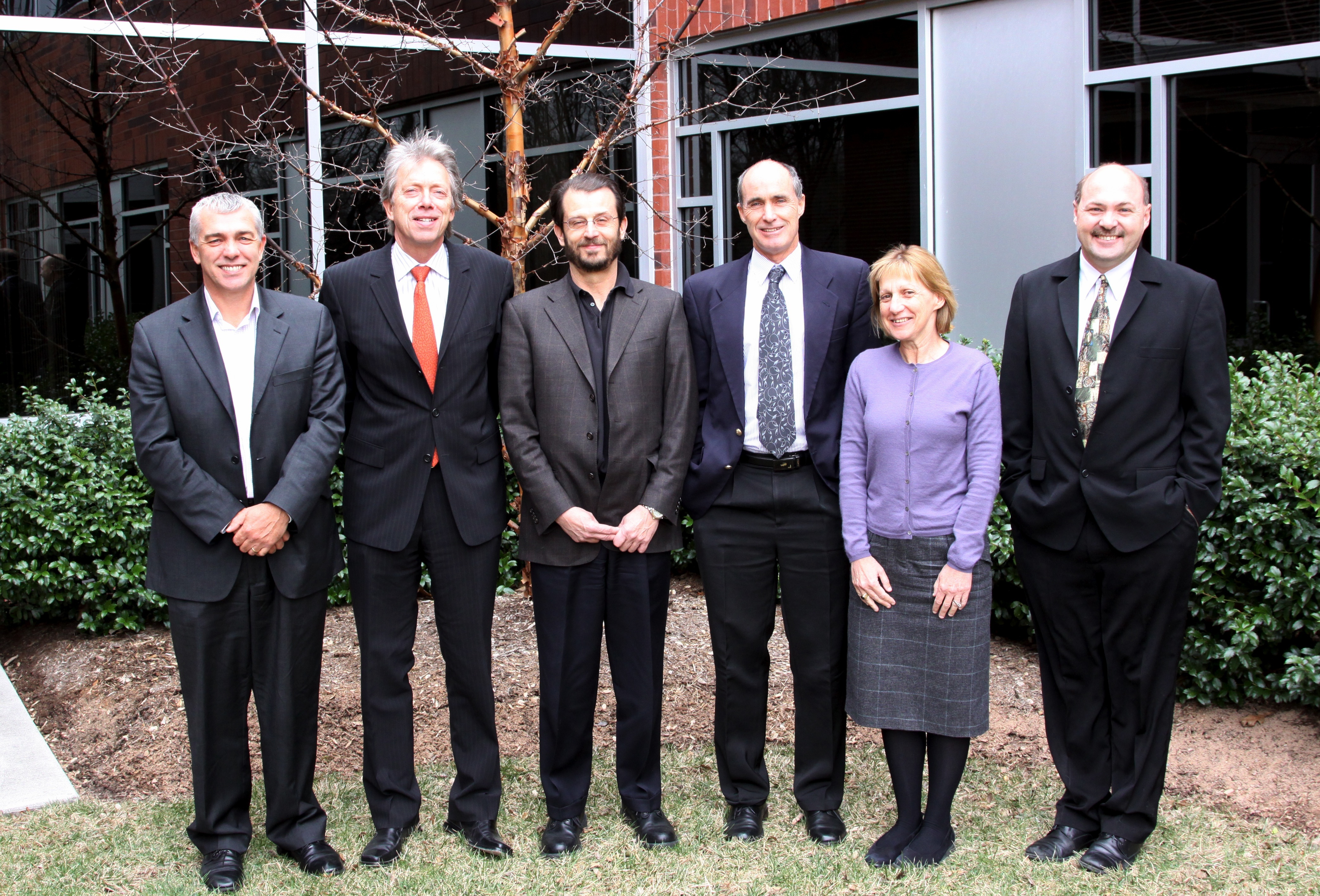Australian university delegation visits Virginia Bioinformatics Institute to discuss collaboration

A group of senior management and faculty members from the University of Wollongong in Australia met with members of the Virginia Bioinformatics Institute's Network Dynamics and Simulation and Science Laboratory (NDSSL) on March 12, 2009, to explore possible research and educational collaboration opportunities in the area of infrastructure policy informatics.
NDSSL Director Chris Barrett and Virginia Bioinformatics Institute Interim Director Paul Knox met with the delegation to discuss the University of Wollongong’s work to establish the SMART (Simulation, Modelling and Analysis for Research and Teaching) Infrastructure Facility. The university was recently awarded $35 million from the Australian government to establish the research and training center to address Australia’s future infrastructure needs. The facility will be the first of its kind in Australia, providing independent, evidence-based research into a range of infrastructure requirements through the use of sophisticated modeling, analysis and simulation of large-scale complex infrastructure systems, which will help shape Australia’s policy and project priorities.
“The University of Wollongong delegation wanted to visit Virginia Tech, and in particular the NDSSL group, to learn more about our experiences integrating policy informatics across several infrastructure domains, including infectious disease outbreak planning and mitigation, wireless communication and control system design and analysis, power distribution networks, and energy market regulatory mechanisms,” explained Barrett.
Members of University of Wollongong delegation visiting Virginia Tech included Vice-Principal of Research and Professor Judy Raper, Vice-Principal of Administration Chris Grange, Dean of Engineering Chris Cook, and Head of the School of Mathematics and Applied Statistics and Professor Tim Marchant.
The Network Dynamics and Simulation Science Laboratory pursues an advanced research and development program for interaction-based modeling, simulation, and associated analysis, experimental design, and decision support tools for understanding large biological, information, social, and technological systems. Extremely detailed, multi-scale computer simulations allow theoretical and experimental investigation of these systems.



